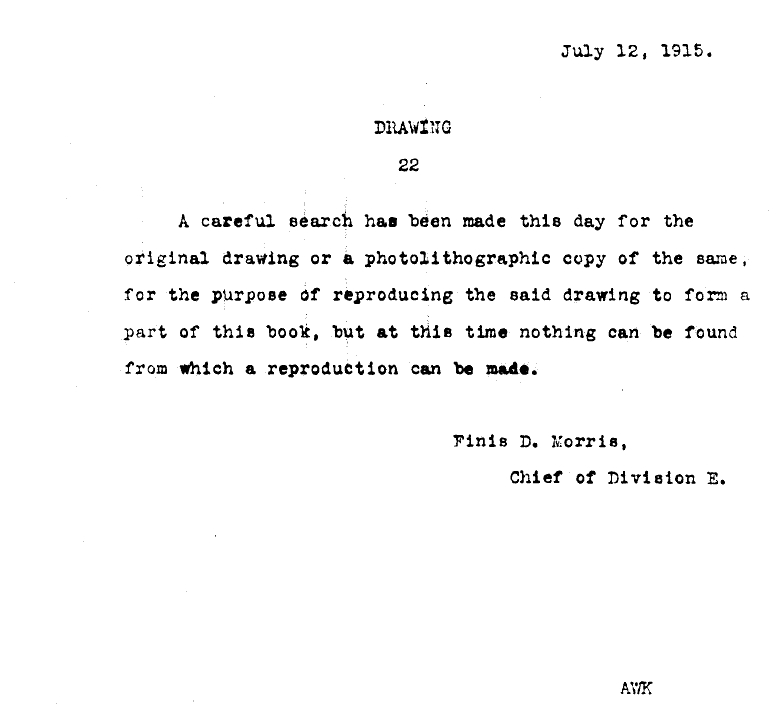I love patents. In fact, I once wrote a novel based on a patent — It was called Patent 22 — If you look this patent up you’ll just find a piece of paper from 1915 which says, essentially, that a search was made for the patent but that it couldn’t be found. No one wanted to publish it — and reading it now I do realize that it does need some serious work. Still, I think this little tidbit gives you a little bit of an idea about my interest in patents. (The paper on file at the patent office is below):

Anyway, here’s the thing that people don’t know. There are three ways to protect a plant from someone else “stealing” it: Plant Patents, The Plant Variety Protection Act, or a Utility Patent (which is what you or I usually think of when we think of a patent). The Plant Patent Act passed in 1931 and it is the way that most plants are protected today. Plants like the Honeycrisp apple which are propagated vegetatively (using cuttings or grafting) are usually protected with this type of patent. The second type of protection is the Plant Variety Protection Act of 1970. This Act lets you protect seed propagated plants. With these two types of protection you wouldn’t think that any other type would be needed — but the Supreme Court has twice ruled that plants can be protected using Utility patents (once in the 1980s and once in the early 2000s). So, what is the problem with that? Well, basically, the problem with that is that, while the other ways to protect plants allow for the use of those plants in research or for breeding and farming, using a utility patent prevents anyone from using the patented plant from doing anything with that plant without permission from the patent holder. And, basically, an entire species of plant can be patented — it has been done before with a bean that someone brought from Mexico into the US — he cornered the market on the bean and noone could sell or breed the bean without his OK. Sounds insane doesn’t it? Just my first thought on a cold Thursday morning.
Just curious, did the patent for that imported Mexican bean hold? And it wasn’t a newly developed variety — and yeah, I know there are many improperly granted patents, and on the surface this seems suspiciously like a prime example.
Thanks for bringing this up – I don’t know nearly as much about the fine points of plant patenting as I would like to, not because I’m developing new varieties, but because I think we all have a vested interest in balancing public and private rights with regard to innovation, and plants are a pretty important category of potentially patentable material.
Good point Laura. This patent was eventually overturned — the guy really didn’t do anything to make the bean unique — thus it should never have been patented in the first place. On the other hand I know someone who patented any individual of a particular species of grass which was bright green, drought tolerant, etc. Now THAT really put a crimp in the work of some other researchers who were working on the same species. The patent was allowed to expire early, however.
I have always felt that biological patents are inherently the wrong way to protect the developer’s rights. After all, until we are building complete organisms from scratch they are part of the natural environment that seems to me the ultimate public domain. There should be a system that gives royalties and control to an extent, but having looked
at the patent system for some of our own plant developments it just seems to be the wrong vehicle. I can not ever feel I have the sole rights to the genes in my plants, they have been part of something far bigger and older than humanity, let alone me and my tinkering with hybrids and cloning cool sports.
This is really an important topic and one that I feel will gain importance in the future. I believe what Hap has written is right on. Thank you for this forum.